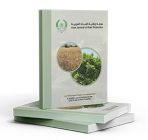Gh.M.A. Morsi and S.R.M. Farag*
Plant protection Research Institute, Agriculture Research Center, Giza, Egypt.
*Email address of the corresponding author: [email protected]
Received: 9/1/2024; Accepted: 8/8/2024
A Regional Scientific Journal Published Four Times a Year by the Arab Society for Plant Protection
Gh.M.A. Morsi and S.R.M. Farag*
Plant protection Research Institute, Agriculture Research Center, Giza, Egypt.
*Email address of the corresponding author: [email protected]
Received: 9/1/2024; Accepted: 8/8/2024
Detection and control of the peach fruit fly, Bactrocera zonata (Saunders) and the Mediterranean fruit fly, Ceratitis capitata (Wiedmann) depends mainly on two male lures, methyl eugenol and Trimedlure which are used individually in separate traps. This study was carried out under field conditions in three governorates in Egypt: Kafer El Sheikh, Sharkyea and Ismailia to investigate the effect of mixing methyl eugenol and trimedlure in a single trap on the mean number of attracted male flies of B. zonata and C. capitatab as compared to the same lures individually in separate traps. The study investigated also the effect of different concentrations (1, 2 and 3%) of ammonium acetate traps as well as the effect of different times of inspection and different locations of these two types of traps inside the orchards on the mean number of attracted flies. The results obtained showed that in the three governorates there was no significant difference in mean number of B. zonata male flies attracted to single methyl eugenol (9.86 male flies/trap/week) and those attracted to that mixed with trimedlure (10.16 male flies/trap/week). In case of C. capitata, in Kafer El sheikh and Ismailia governorates, there was no significant differences in mean number of attracted male flies between the single trimedlure trap (9.09 and 6.11 male flies/trap/week) and the mixture of it with methyl eugenol (8.11 and 5.63 male flies/trap/week) for the two governorates, respectively. There were no significant differences found between the three concentrations 1, 2 and 3% of ammonium acetate traps in the mean number of attracted flies of the two insects among the three tested governorates. Time of inspection for each tested orchard had a high significant effect on the mean number of attracted B. zonata and C. capitata male flies with both single and mixed lures and also on the mean number of the two insect flies captured by Ammonium acetate traps. The study also showed that there were no significant differences between the three locations of the tested traps inside all orchards in the mean number of male flies of the two insects attracted by the single lures or the mixture of them or by Ammonium acetate traps. Based on the results obtained, it can be concluded that using the mixture of methyl eugenol and trimedlure as a single lure in a single trap as a practical alternative to each of them alone in two separate traps should be considered, and this will have positive economic impact on the control of these insects.
Bactrocera zonata, Ceratitis capitata, trimedlure, methyl eugenol, ammonium acetate

